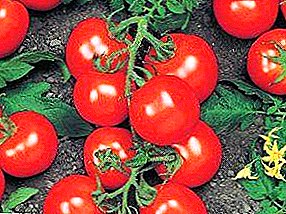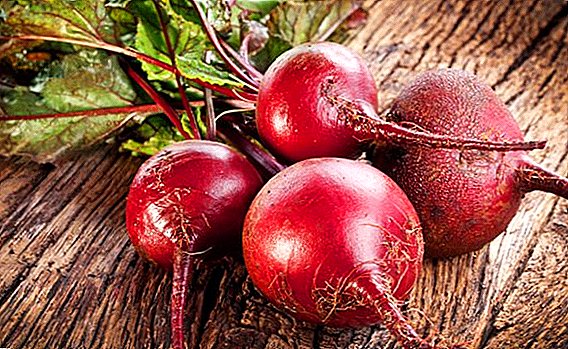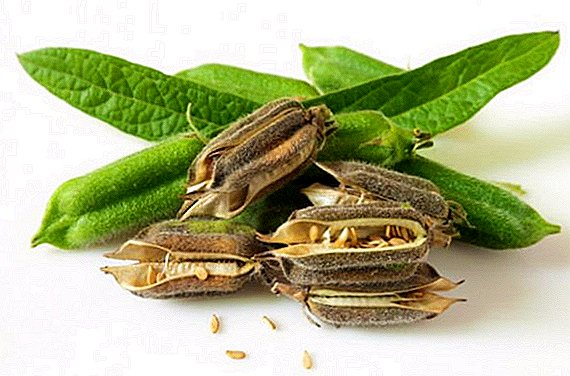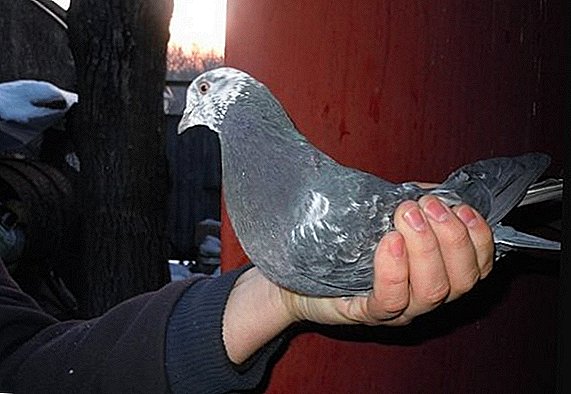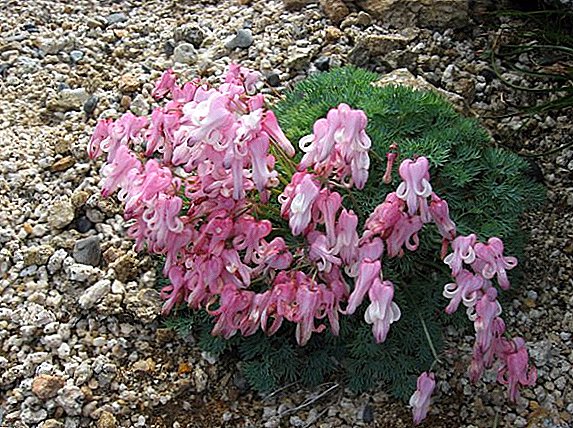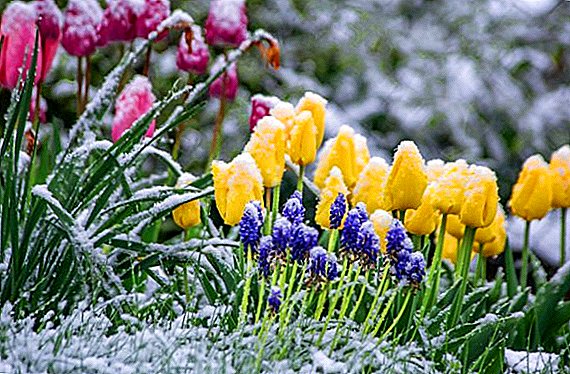 Spring and autumn frosts are not uncommon. Such a change in temperature poses a direct threat to garden and garden crops, since the fruit ovaries and flowers, for the most part, are very delicate and at -2 ° C may already be damaged. In this regard, it is very important for gardeners to know how to protect their garden and garden against such a natural phenomenon.
Spring and autumn frosts are not uncommon. Such a change in temperature poses a direct threat to garden and garden crops, since the fruit ovaries and flowers, for the most part, are very delicate and at -2 ° C may already be damaged. In this regard, it is very important for gardeners to know how to protect their garden and garden against such a natural phenomenon.
What is it?
The essence of frosts lies in temporary decrease in temperature air on a particular terrain. There are autumn and spring.
The reasons the occurrence of frosts may be as follows:
- the migration of cold air from the northern regions to this place;
- the result of an overnight decrease in temperature (radiation).
 If frosts are associated with radiation, the weather is usually clear and windless. Such a decrease in temperature is always short-lived and almost never reaches such a force, which is manifested during return spring cooling.
If frosts are associated with radiation, the weather is usually clear and windless. Such a decrease in temperature is always short-lived and almost never reaches such a force, which is manifested during return spring cooling.The latter, on the contrary, can stay for several days, cover a larger space and are additionally accompanied by a cloudy sky and strong winds.
Did you know? In 1558 in Europe, it was so cold that the wine that was stored in the French cellars froze. At the time they started selling it, not in bulk, but in ice blocks - by weight. The situation repeated itself in 1709. During the chimes of the bells in the temples, the latter even cracked.
Types of frosts
Frost - a decrease in temperature below 0 ° C, mainly in the night and morning. At the same time, the average daily temperature remains positive. They are divided into three types: advective, radiation and mixed.
Advective
The cause of advective frosts is air mass migrationmoving in a horizontal direction. They bring with them cold temperatures, humidity, etc. These chills come abruptly and then persist for a long time. 
Radiation
Radiation frosts can be explained with the help of physics. During the day, the soil and plants accumulate heat, and at night they give it away.
Since warm air is lighter than cold air, it rises, and its place is taken by cold air masses. Naturally, the lower the temperature of the soil, the more dangerous the consequences will be expected by the plant. Such cold snaps can usually be observed in cloudless and calm weather, they can capture a fairly large area.
Advective radiation
As the name implies, this mixed type cold snaps. A weak freezing is considered to be a decrease in temperature on the soil to -1 / -2 ° C. If it is cold to -3 / -4 ° C, then this frost is called strong. A very strong frost is -5 / -8 ° C.
Green guests from the subtropics (strawberry tree, laurel, rosemary, myrtle) have insufficient cold resistance, so they are often grown only at home or in the winter garden.
Influence of frosts in spring and autumn
Frosts, namely the characteristics of their manifestation on garden crops and garden crops, directly depend on frost resistance the latter - the level of critical temperature, upon the occurrence of which the organs of the plant are damaged partially or die. Frost resistance is not only different plants differ, but also organs of the same vegetable or vegetable culture.  If return frosts come early, then they may not have time to harm the plants, since the latter have not yet had time to germinate, and therefore remain under the protection of the soil and mulch. More dangerous are late return temperature drops, which can manifest themselves until the beginning of June. They just fall on the period of flowering of fruit trees and berry crops.
If return frosts come early, then they may not have time to harm the plants, since the latter have not yet had time to germinate, and therefore remain under the protection of the soil and mulch. More dangerous are late return temperature drops, which can manifest themselves until the beginning of June. They just fall on the period of flowering of fruit trees and berry crops.
Young leaves, buds and flowers are very sensitive to cold and still can not resist it. The sap in the cells freezes, as a result of which the membranes are broken and cell death occurs, and then the plants themselves.
Did you know? Abnormal winters on the planet were observed long before the invention of thermometers. According to the chronicles, in the winters of 401 and 801, the waves of the Black Sea hardened.
On garden crops
Even with a minimum decrease in air temperature be seriously hurt can loosely rooted and not yet seasoned seedlings of eggplants, thermophilic tomatoes and peppers. Enough indicator of -1 / -2 ° C, so that the plants stopped their growth, and the fruiting was delayed by 1.5-2 weeks.
If the frost is more severe - the culture may die. The crops that are planted in the ground close to the surface are always the first to suffer. These are cucumbers, pumpkin, zucchini, etc.  But still there are garden crops, which are not afraid of a sharp cooling. it cold resistant plants that do not suffer damage due to a drop in air temperature. These include carrots, parsley, onions, celery, dill, and even spinach.
But still there are garden crops, which are not afraid of a sharp cooling. it cold resistant plants that do not suffer damage due to a drop in air temperature. These include carrots, parsley, onions, celery, dill, and even spinach.
On fruit
Fruit trees are almost always sensitive to frost. Even when the temperature dropped for a very short time, the unpleasant consequences may be irreversible. As the observations show, the earlier the warm weather sets in, the higher the likelihood of late cooling periods.
The most dangerous for fruit trees are conditions when during the day temperature conditions are kept within 5-10 ° С, and at night it falls to -2 ° С. In this case, the flowers will already receive irreversible damage. As for the ovaries, they can die even at a temperature of -1 ° C.  It so happens that after freezing, the ovaries and flowers remain in place, do not crumble, and it may seem that everything turned out well. But unfortunately, quite often on such trees grow poor-quality fruits with severe deformation, and the overall yield is relatively low.
It so happens that after freezing, the ovaries and flowers remain in place, do not crumble, and it may seem that everything turned out well. But unfortunately, quite often on such trees grow poor-quality fruits with severe deformation, and the overall yield is relatively low.
Plum, pear and cherry orchards suffer the most from frost damage. As for apple trees, they bloom a little later than other garden crops and are slightly less damaged than others. Reduce the harmful effects frosts help proximity to trees, water, because the water gives off heat at night and, thus, slightly warms the plants.
Ornamental trees and shrubs
Speaking of ornamental shrubs and trees, it is worth noting that the former are more susceptible to damage than the latter. This is due to the fact that at the crown level air temperatures are usually higher than below. In case of weak frosts it can happen that the shrubs can be damaged, and the trees at the same time will not cause any harm.
We should also tell you about whether the spring frosts will be detrimental to roses. If before that a protective film has been removed from the flowers, the branches can be froze at a temperature below -7 ° С. In the same case, leaves and buds will be frozen. Such an impact will weaken the rose, postpone a little flowering time, but will not destroy it.  In order for the rose to perish, the frosts should cool the soil down so that the roots have managed to freeze, and there is practically no such spring. Weak frosts ranging from -1 ° C to -3 ° C usually do not affect the rose in any way, or damage is inflicted on very minor ones.
In order for the rose to perish, the frosts should cool the soil down so that the roots have managed to freeze, and there is practically no such spring. Weak frosts ranging from -1 ° C to -3 ° C usually do not affect the rose in any way, or damage is inflicted on very minor ones.
What to do? Methods of dealing with frosts
On the methods of dealing with frosts say a lot. Some methods have proven to be very effective, others - very dubious, time-consuming and not bringing results.
Sprinkling
The method is quite interesting. You will need a watering hose and a small spray gun to make the spray look like raindrops. Trees and shrubs should be completely sprayed with water. And as the water freezes, it begins to generate heat, which will be life-saving for the plant.
At temperatures closer to 0 ° C, the liquid evaporates and forms steam, which has a high level of heat capacity. This method is suitable for garden beds. Watering should be carried out in the evening if frost is expected at night.
Smoke
This method should be applied immediately after the air temperature has dropped to + 2 ° C. It is necessary to smoke before dawn.
Smoke should travel along the ground, only in this case it will help protect plants from frost. This is due to the fact that its temperature is higher than the air temperature, which means that the smoke will become an obstacle to the cooling of the soil surface.
Due to this fact, the plants will be able to survive a sharp cooling. It is desirable that in the process of smoking was calm weather. Otherwise, you need to carefully follow the absence of open fire to avoid fire.
By the way, during the spring frost for grapes smoke, according to gardeners, is the best defense.
The process itself is performed as follows:
- Along the perimeter of the plot, it is necessary to collect heaps of straw, garbage, sawdust and other material that will later become a source of smoke.
- Then a stake should be driven into the ground, which will serve as a support, and dry material should be laid out around it, which will ensure burning.
- The fact that ignites quickly, should be covered with sawdust, leaves, raw straw - materials that ignite more slowly and smoker.
- At the end you need to sprinkle the heaps with a layer of earth 8-10 cm thick.
Harboring
In fact, this method will be the easiest and fastest. Gardeners love him for efficiency and affordability. It is necessary for the period of frost to cover the plants with materials that protect them from the external environment. Suitable glass bottles, plastic film, mini-greenhouses, spanbond, thick paper, etc.
Important! Be sure to ensure that the covering material does not touch the leaves of plants.
Organic mulch is also suitable for this method - straw, dried grass, compost. It is best to lay out such protective material after the evening watering. They will reduce the heat from the earth and increase its moisture. The method is very effective.
Top dressing
Feeding plants, you can significantly increase their resistance to frost. But here it is important to know that minerals can also have the opposite effect. With an increased amount of potassium and phosphorus in the fertilizer, the plant will be more protected, if you provide an excess of nitrogen - the stability of the culture weakens. Therefore, before the planned cooling, plants should be fed with potassium-phosphorus substances.
Treatment of affected cultures
If, nevertheless, it happened that the frosts caused damage to garden or garden plants, it is necessary to try to reanimate them.
To do this, sprinkle frostbitten seedlings cold waterthus reducing the intensity of evaporation processes. As for tomatoes, zucchini and peppers, they should be sprayed with antidepressants - Novosil or Epin. Urea is also suitable, diluted in proportion to 1 matchbox per 10 liters of water.
Features of temperature are directly dependent on the climatic zone. In this regard, it is difficult to determine which of the listed methods of rescue from frost is best suited. It is worth noting that you need to choose not by the simplicity of the method, but by the efficiency for a particular garden plot.


